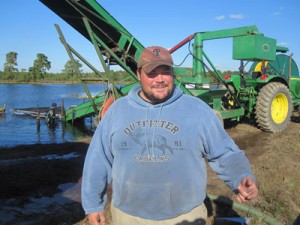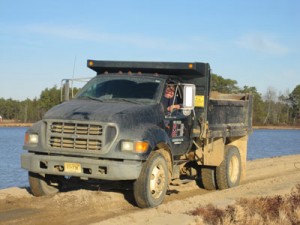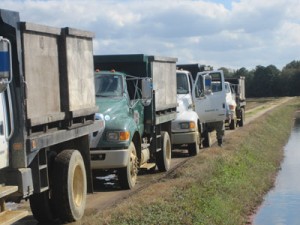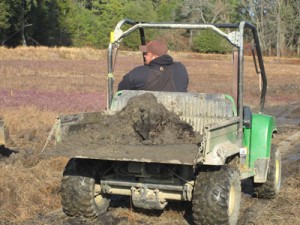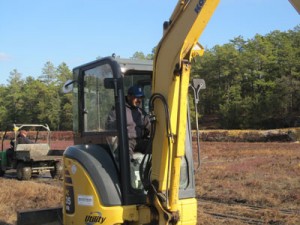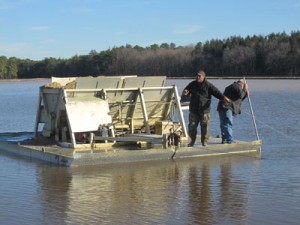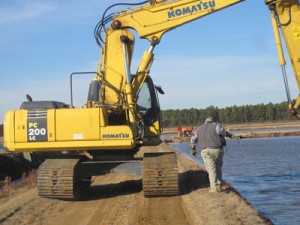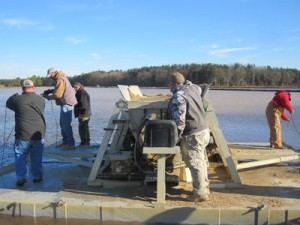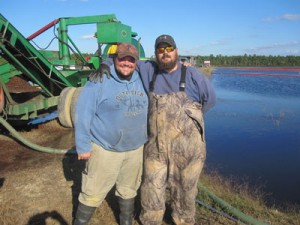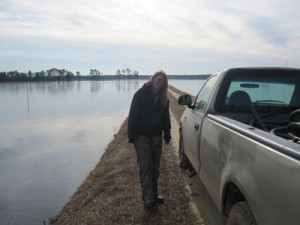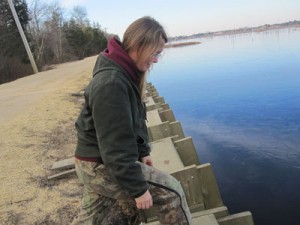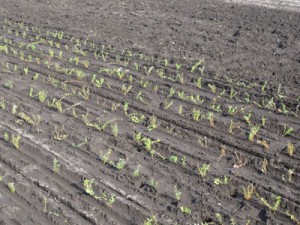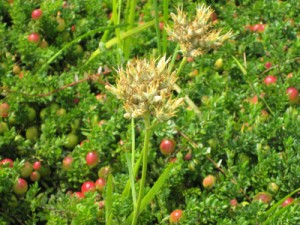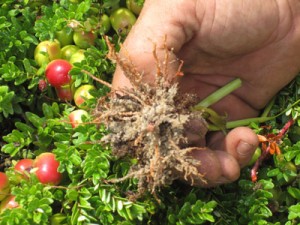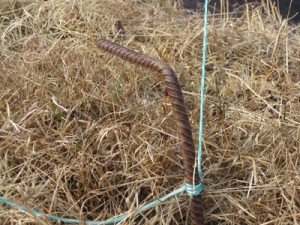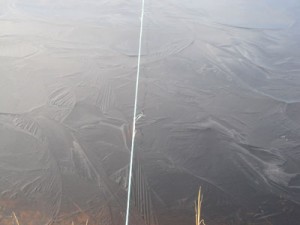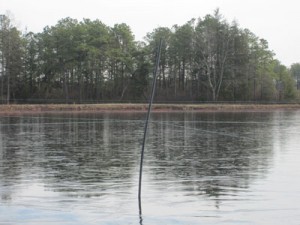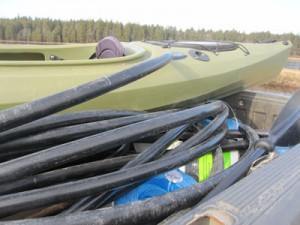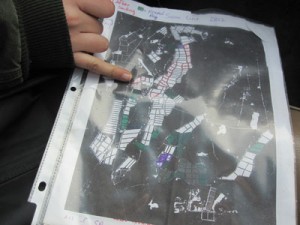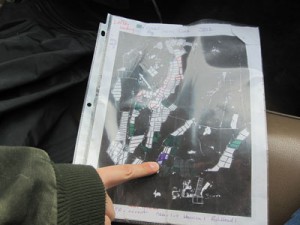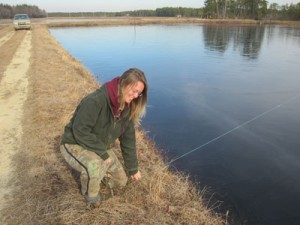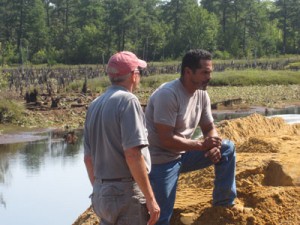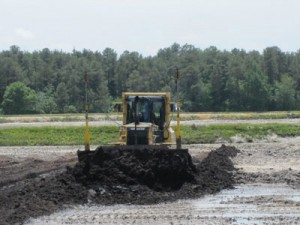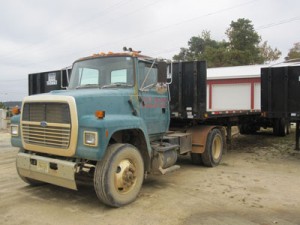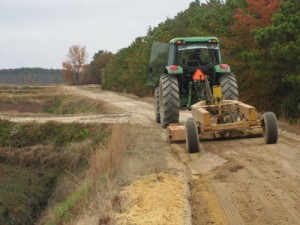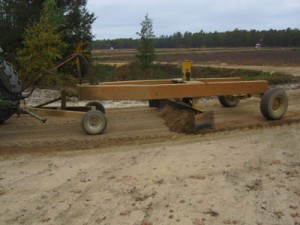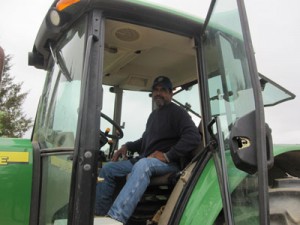Pine Island’s main ongoing projects this week are sanding, bog renovation, and finishing the swan string installation. To continue this new year with introducing new faces, team member Vincent Arnwine has had a front seat for most of these jobs. Vincent, a local resident, joined our team shortly before the harvest, and is enthusiastic about everything he’s seen and experienced since he started.
Vincent worked on Kelvin’s gathering team during the harvest, and really enjoyed learning the process. He had been visibly impressed at the time with the team ethic (“It’s really cool to work at a place where everyone is willing to do what needs to be done; nobody’s above doing something and no one is afraid of hard work,” he said at the time) and that hasn’t changed since the harvest ended and he began to work on other jobs around the farm.
Mostly what he’s been doing is driving: he’s hauled sand to build up the dam at Ox Pasture, drove a Gator at Papoose hauling out dirt when the team was digging a new ditch, and has been driving for the sanding team since the end of December. He also helped install a gate and worked with Kylie’s team putting up swan string. “I’ve been having a lot of fun,” he says. “It is a change from the harvest; it’s still hard work but it’s not as hectic. It’s a little more predictable; you can be sure of what you’re doing on any given day.”
Vincent especially likes working with long-time team members; he says they’re teaching him a lot. “I’ve worked with Junior on almost everything since harvest except for the swan string,” he says. “I keep telling him, I want to learn to operate the heavy equipment next.”
He’s also been out with Jeremy on the weekends to check the water, just to start learning a little bit about it. He thinks this time of year is a good time to start learning about the big picture; he’s learning a little bit about how the water flows and how it’s directed. “During the harvest everything happens so fast,” Vince says. “I couldn’t see where it was coming from, and there are a hundred things to do. You can’t learn it all in one day, but you have to start somewhere!”
Vince definitely knows how to do whatever it takes. While the winter tasks rarely change from year to year, sometimes problems arise and the team needs to work together to fix them. On this particular day, a cable got tangled while shifting the sanding barge from one side of the bog to the other. But the entire team pitched in to untangle the line safely, and the work quickly got back underway.
Vince’s energy and enthusiasm is “a revelation”, Bill says. “He really gets it.” Vince doesn’t quite see it that way.
“You gotta have fun where you work. If not, you’d be miserable. This doesn’t feel like work, man. I’m just having fun. What’s that they say? ‘If you like what you do, you’ll never work a day in your life.’ That’s here. That’s me.”

